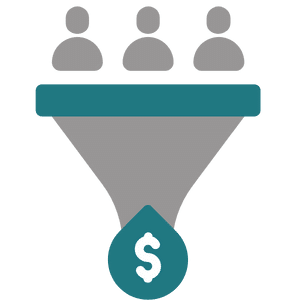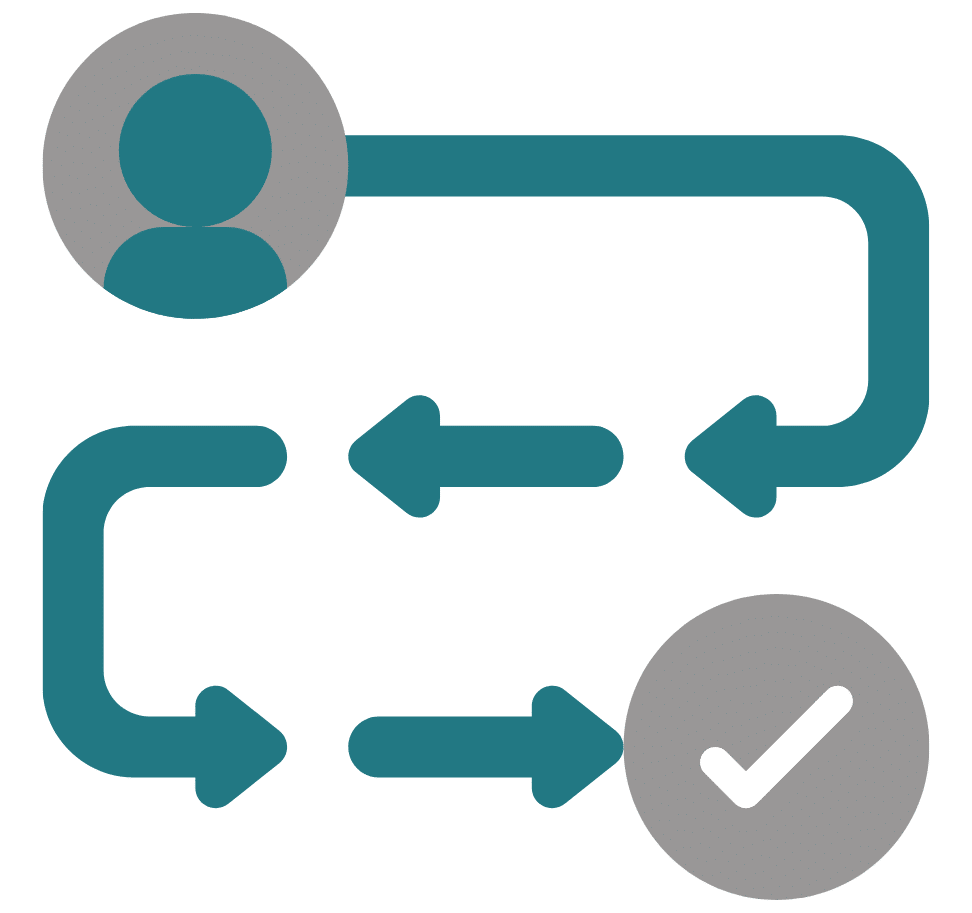THE ONLINE SALES FUNNEL
From Visitor to Customer
MARKETING  WEBSITES
WEBSITES  FUNNELS
FUNNELS

What is a funnel?
An online marketing funnel is the use of strategic marketing that guides potential customers from discovery to transaction.Some businesses have incredibly simple marketing funnels: someone clicks on their ad and makes a purchase—end of story. Others are more complex, the potential customer takes a long time to decide or needs education. Nonetheless, if you can solve someone’s problem or fill a need, you can have a sales funnel. Building a funnel on a website involves creating a strategic sequence of web pages and elements that guide visitors through a specific conversion process.

How To Build A Sales Funnel Online
Understand Your Audience: Research and analyze your target audience to understand their needs, preferences, and pain points. This will help you create compelling content and offers that resonate with them.
Plan Your Funnel Structure: Outline the stages or steps of your funnel. Typically, a funnel includes a landing page, a thank-you page, and one or more intermediate pages that bridge the gap between these two.
Create a Captivating Landing Page: Design a landing page that grabs visitors’ attention and clearly communicates the value proposition of your offer. Use persuasive copy, compelling visuals, and a strong call-to-action (CTA) to encourage visitors to take the desired action.
Offer an Irresistible Lead Magnet or Product: Provide a valuable incentive or offer that motivates visitors to engage with your funnel. This could be a free e-book, a discount code, a webinar, or any other enticing content or product that aligns with your audience’s interests.
Capture Visitor Information: Use a lead capture form on your landing page to collect visitors’ contact information, such as their name and email address. Keep the form simple and concise, asking for only essential details to minimize friction.
Deliver a Thank-You Page or Confirmation Email: Once visitors submit their information, direct them to a thank-you page that acknowledges their action and provides clear instructions on what to expect next. Alternatively, send them a confirmation email that accomplishes the same purpose.
Nurture Prospects with Follow-Up Emails: Implement an email automation system to send a series of follow-up emails to your leads. Provide valuable content, address their pain points, and gradually introduce them to your products or services.
Offer Upsells or Additional Products: Depending on your funnel’s objective, consider including upsells or complementary products as visitors progress through the funnel. This can increase customer value and maximize revenue.
Test, Analyze, and Optimize: Continuously monitor and analyze the performance of your funnel. Track metrics such as conversion rates, bounce rates, and email open rates. Use this data to identify areas for improvement and make iterative changes to enhance your funnel’s effectiveness.
Remember, building a successful funnel is an ongoing process that requires testing, refining, and adapting based on user feedback and data analysis.
Let’s Get Started
Great adventures start with a conversation
©2019 Workbea Digital Solutions

